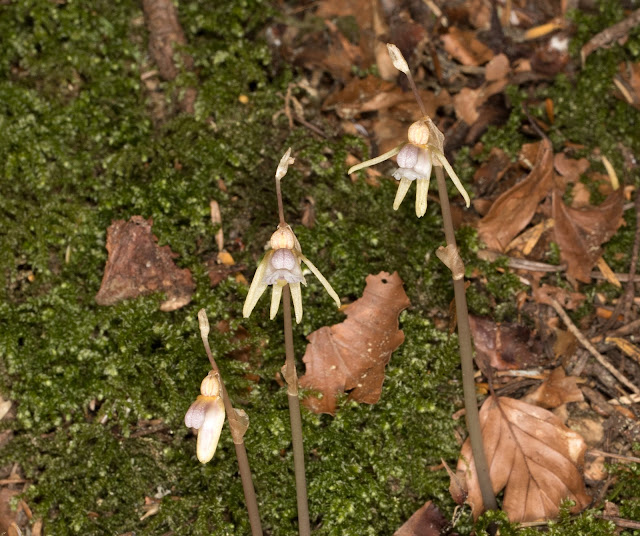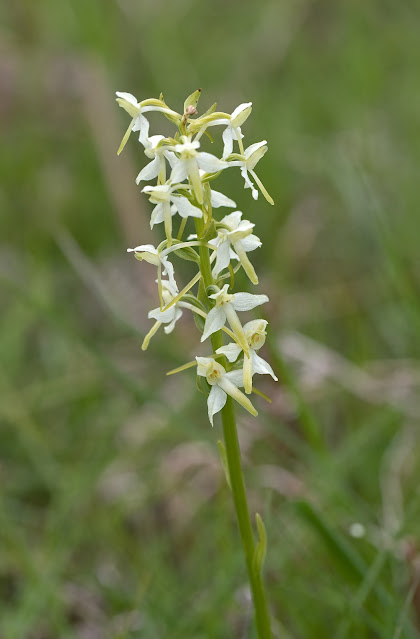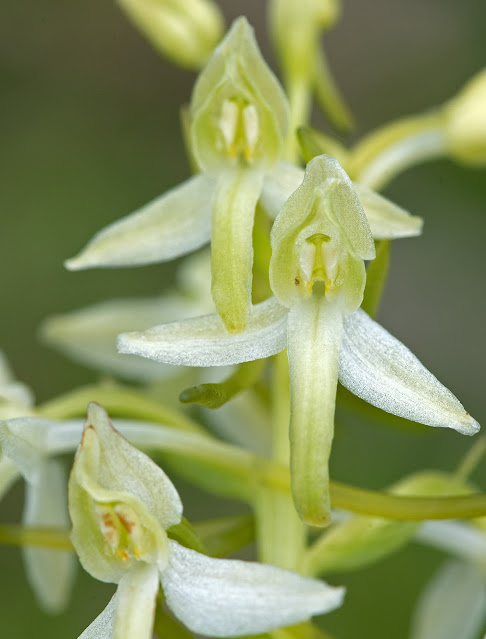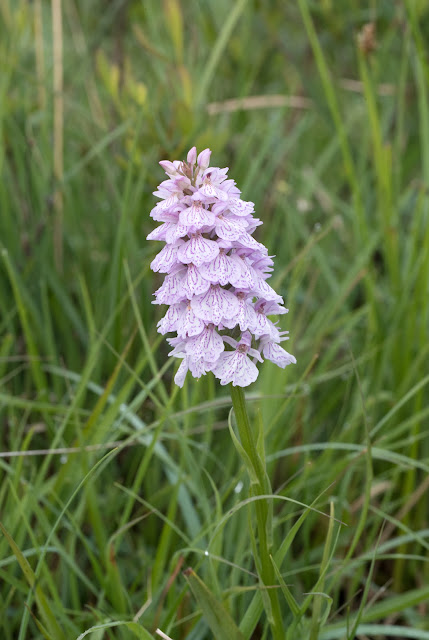Like many amateur naturalists I keep lists, of late I have trimmed them down to just life lists but there are a couple more - I sit each winter creating a target list, mainly species that I would like to photograph during the coming summer. Additionally I keep a bucket list - reserved for those extra special items that in all probability I won't see. Such a subject was the Ghost Orchid, Epipogium aphyllum, it was certainly top of the list and had been there for some years. However, I managed to find a tour - The Vercors in Summer offering the chance to see it.
So the 8th of July found me in dense woodland somewhere in the Vercors in France. It was a search that was being distracted by the presence of Epipactis species but when Paul, our leader for the tour, said "I've got a Ghost Orchid", I was with him in microseconds, well as fast as my decrepit knees would allow. I have a dread that the idiot who treads on the rare subject is me, so I take extra care and in this case it was well justified. There were at least six specimens within a square metre and I had only picked out one. Anyway once the heart rate slowed down I commenced to take a few shots of something I never expected to see.
 |
| "I've got a Ghost Orchid" |
Having recorded several specimens we relocated to another known site where we could roam free and find our own specimens. I have to say that I was delighted to find several but the icing on the cake was finding a trio of single flowered specimens.
Another plant that I recorded was Yellow Bird's-nest, Hypopitys monotropa or a Dutchman's Pipe. I have found it in beech woods in West Sussex but it is far from common.
 |
| Yellow Bird's-nest. Hypopitys monotropa |
 |
| Yellow Bird's-nest. Hypopitys monotropa |
Big thank you to Paul Harmes - the man with the knowledge

















































